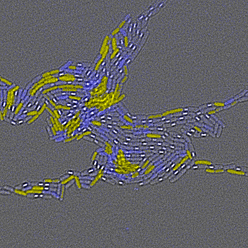Bacterial Signaling Networks
Research in the Bischofs-lab focuses on the experimental and theoretical analysis of bacterial signaling networks. These circuits are used by bacteria to sense and respond to their environment but also to interact with each other. Our broad aim is to understand the relationship between the function and design of these networks which evolved in a world subject to both biological and physical constraints. Our model system is the gram-positive bacterium Bacillus subtilis. Bacillus shows an exquisite variety of adaptive behaviors to environmental stress and differentiates into special cell phenotypes. Differentiation is under control of interlinked signaling networks. The fairly detailed prior knowledge about the networks, in particular the sporulation phosphorelay, allows us to ask “higher-order” questions about network organization in relationship to facilitating complex tasks such as cell communication or the generation of phenotypic diversity. Answering those experimentally requires novel (still “low-throughput”) techniques to measure signaling activity both across the population and at the single cell level. We particularly employ biophysical approaches based on fluorescence microscopy. In addition, the extensive prior and our own experimental studies provide sufficient information to develop and further refine computational models to help us guide future experiments and to abstract our findings. Please also note our web pages at BioQuant Selected publications
| Snapshot of a sporulating micro-colony showing a large degree of phenotypic heterogeneity. Cells that activate the sporulation pathway are expressing CFP (blue) driven from a sporulation promoter PspoIIA while cells that delay sporulation express YFP (yellow) from the PrapA promoter. This promoter drives not only the expression a regulatory protein (RapA) but also the transcription of an extracellular signaling peptide (PhrA) that is implied to serve bacterial communication. The bright spots denote maturing endo-spores.
|

